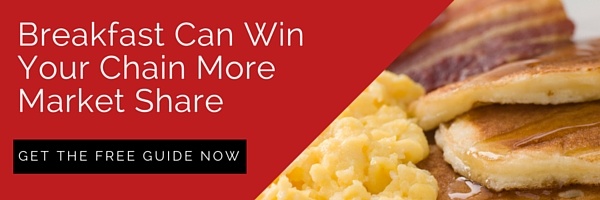
Let’s take a moment for some honest reflection: Fast food faces a real challenge. Among Millennials, the industry suffers from an image problem. Young consumers have more than a few ugly assumptions about fast food. To put it simply, fast food isn’t really “in” with younger generations of American eaters.
A lot of Millennials, upon hearing the words “fast food,” will automatically jump to “burgers-and-fries.” They associate fast food with high-fat, high-calorie, uninspired meals. And to top things off, in many cases, fast food consumption brings with it the risk of being judged poorly by peers.
In a 2015 New Yorker article, contributor Michael Specter shed light on Millennials’ fast food groupthink when he interviewed two young women who were sitting next to him at trendy Lower Manhattan eatery Sweetgreen.
“Like many of their millennial peers, Kathleen Davis and Andrea Nguyen eat out a lot,” he wrote, though both claimed to do their best to make healthy food choices. “I asked the women at Sweetgreen if they ever patronized McDonald’s or similar restaurants. Davis shuddered and said nothing. After a brief silence, Nguyen owned up to eating at McDonald’s once or twice a month, but not for a Big Mac or French fries,” Specter reported.
“‘They have some surprisingly good food these days,’ she said in a confessional whisper. ‘But I would never be seen walking down the street with a McDonald’s bag in my hand.’ I asked why. ‘Shame,’ she replied. ‘I don’t know anyone who would feel differently.’”
Strong words. And probably indicative of the biggest challenge the fast food industry faces as it seeks to engage Millennials. In a world of constant digital connectedness, some Millennials feel like they can’t risk consuming fast food. Or at least, can’t risk being caught with it.
How can QSR companies win market share when they face that much headwind among the largest consumer demographic?
Here are 5 ways your company could fight the stigma and capitalize on Millennial eating trends:
1. Be as transparent as possible about sourcing and preparation.
The Millennial generation has been burned too many times. It’s developed a keen sensitivity to AdSpeak and spin. It’s looking for excuses not to buy fast food. So steal the thunder. Be upfront and candid about what’s in your food, and about from whom and from where you get your ingredients. If you try to gloss anything over, Millennial consumers will sniff out the truth.
2. Source local and organic ingredients whenever possible.
If you can’t source local, organic, antibiotic-free and non-GMO at scale now, find out what it would take to do so later. Then, take steps to move in that direction. Healthier, cleaner eating isn’t just a QSR trend — it’s a movement. And, as you take those steps, share your company’s journey. Use it as a point of pride and an engagement effort. Just like your high school math teacher told you, when it comes to Millennial consumers, you’ll get partial credit for showing your work.
3. Work with suppliers to source cruelty-free protein.
To the Millennial consumer, there’s no excuse for (and no possible rationalization of) inhumane conditions on the farm, in the supply chain or at the slaughterhouse.
4. Don’t try to make your current menu items healthier. Build healthier options from scratch.
When fast food companies only try to take the fat out of burgers, make their fries healthier, or tinker with portion sizes, they don’t attract healthier eaters. They more often succeed only in turning off their core consumers. Instead of tweaking existing recipes to make them “healthier,” focus instead on building healthier menu options from scratch. Get out of your comfort zone. First, find out what fresh and organic produce, and what cruelty-free and antibiotic-free proteins you can already source by scalable means. Then, design completely new products around those availabilities.
5. Experiment with all-day service and flexible menus.
McDonald’s has convincingly demonstrated the appeal of all-day breakfast. Taco Bell, McDonald’s and other QSR companies have cashed in on 24-hour drive-thru service. But why is it still so hard for Millennials to indulge in a healthy meal at 3 in the morning?
Work with your test kitchen to figure out ways to cater to Millennial demands for both service and choice at non-traditional meal times. Add fresher, healthier options to your late-night and breakfast menus, and you can satisfy a wider range of ethic-based Millennial eaters.






